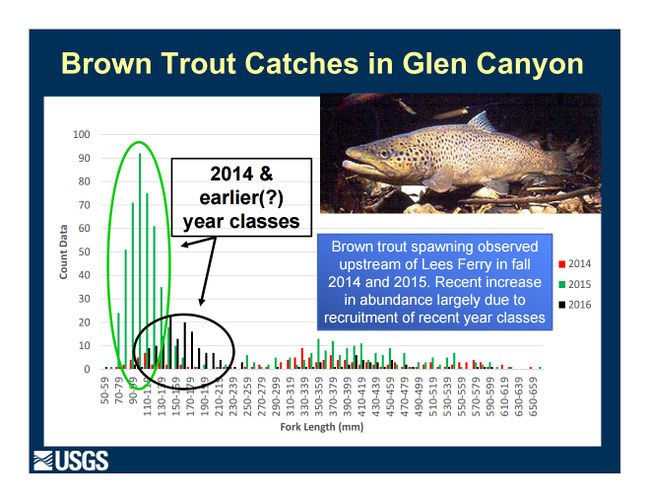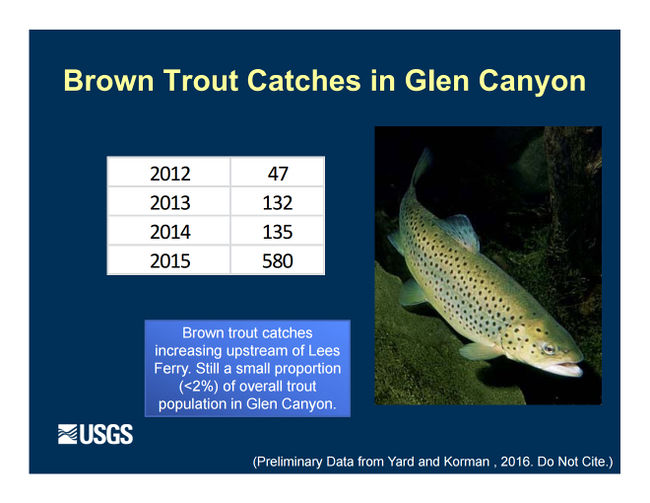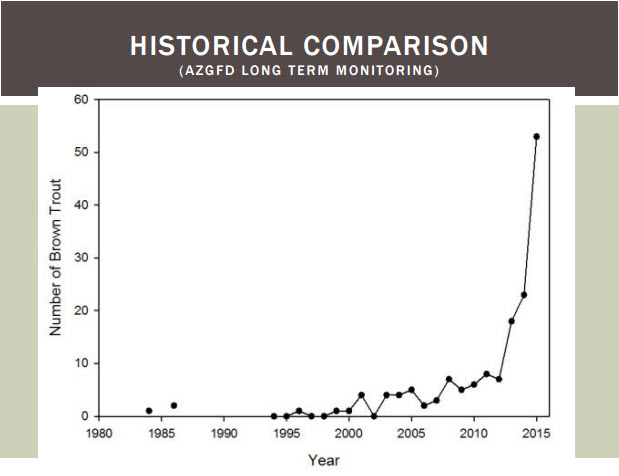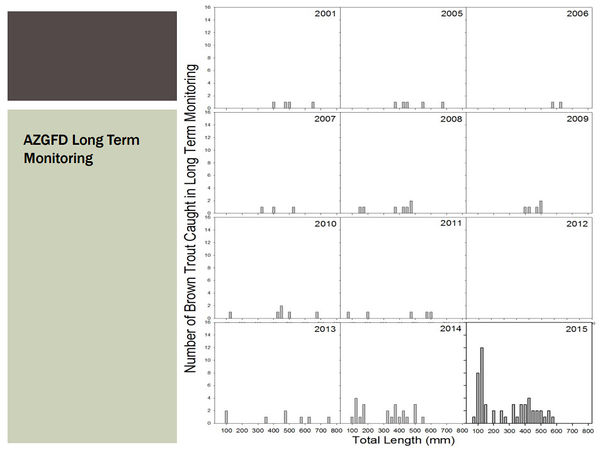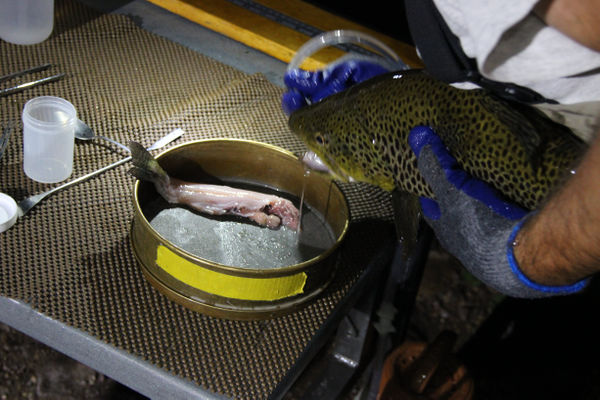Updates
|
Hi TWG,
As many of you all know by now, recent field work in Glen Canyon resulted in an higher number of brown trout captures compared to last year. I have received numerous inquiries from TWG members who want to learn more about the status of brown trout downstream from Glen Canyon Dam, therefore, please call in for an informational webinar on November 10 from 10:00 am to 12:00 pm MST (aka, Arizona time or 9:00 am to 11:00 am Pacific) to learn more. Dave Rogowski will present AZGFD data first followed by Josh Korman and Mike Yard who will present data from the natal origins project. After the presentations, we can discuss potential underlying causes of these recent increases.
Thanks
Seth
= =
WebEx/Conference Call Information
Topic: Brown Trout Discussion
Date and Time: (Thu) Nov. 10, 2016 10:00 am (MST), 9AM (PACIFIC)
Event number: 998 220 707
Event password: FjDTH223
Panelist password: The Event has no Panelist Password
Brown trout numbers during AZGFD monitoring in the Lees Ferry reach.
Brown trout are much more likely to eat other fish (piscivory) but since there are many more rainbow trout in the Colorado River between Glen and Marble Canyons, rainbow trout probably eat more fish numerically than brown trout.
An increasing brown trout population could, however, pose a problem for both the rainbow trout fishery in Glen Canyon and native fish in Grand Canyon because brown trout eat both rainbow trout and native fish alike.
A brown trout collected during 2016 trout monitoring below Flaming Gorge dam that had eaten a 10" stocked rainbow trout.
|
|
Information and Links
|
|
|
Questions
|
- Why are brown trout increasing in the Lees Ferry reach?
- When do brown trout spawn in Lees Ferry? Ans: Nov-Dec
- Could delaying a fall HFE to late November be effective in disrupting the brown trout spawn?
- Do fall HFEs bring more brown trout upstream into the Lees Ferry reach to spawn?
- Has the decrease in the rainbow trout population allowed for increased brown trout spawning in the Lees Ferry reach because of decreased competition for spawning area and decreased egg predation?
|
Presentations and Papers
|
|
2016
2013
2011
|
Other Stuff
|
|
Brown trout tend to grow faster and be more aggressive than rainbow and brook trout, so they outcompete the rainbows and the brooks for limited resources. When they get big enough, brown trout are known to prey directly on smaller trout... [2]
"The divergent responses of brown trout and rainbow trout populations to the summer flood could be explained by competitive interactions. Brown trout are autumn spawners, whereas rainbow trout are spring spawners, and thus, YOY brown trout emerge earlier, are larger and may outcompete YOY rainbow trout (Gatz, Sale & Loar, 1987; Strange et al., 1992 ). Conversely , the autumn spawning of brown trout increases the risk of egg loss if autumn or winter floods occur. Several investigations showed that YOY brown trout or brook trout were generally more numerous than YOY rainbow trout except during years when floods scoured the eggs of the autumn spawners (Seegrist & Gard, 1972; Strange et al., 1992; Warren et al., 2009 ). " [3]
Spearfish Creek offers some of the best fishing in the Black Hills. Well known for its ample brown, rainbow and even brook trout, the stream, with its clear, cool waters is the destination of many anglers year-round. But with 2,000 to 4,000 fish per mile, the size of the fish may not be as large as in other area creeks. So, the South Dakota Game, Fish and Parks removed approximately 3,000 brown trout this summer in hopes of enhancing the size of the fish... Davis said the rainbow trout population is also ample, but sizes also are smaller than in other streams. He said he hopes removing some of the brown trout will give the rainbows a boost in size as well. Davis said brown trout are generally more aggressive and will outcompete a rainbow population. [4]
|
|
